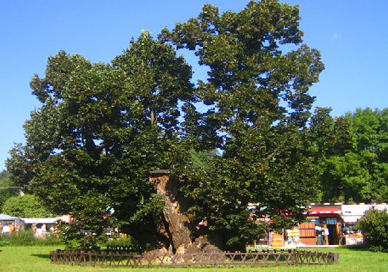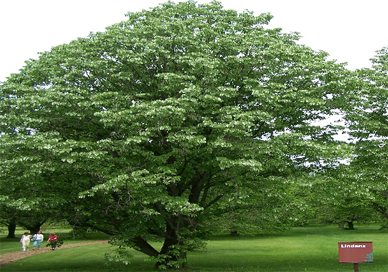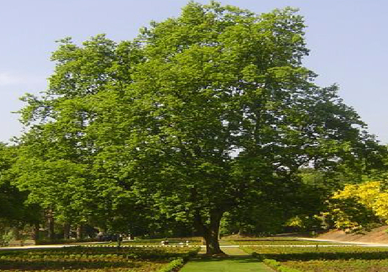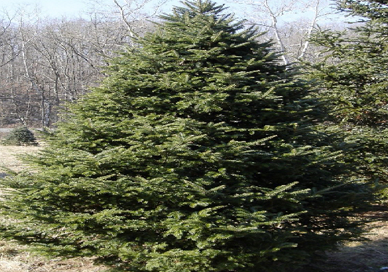Basswood, which is also known as Lime in Britain and Linden in Europe and North America, is any of about 30 different species of trees in the genus Tilia.
Basswood grows throughout the temperate part of the Northern Hemisphere in Asia, Europe and Eastern North America and some specimens have been estimated to be 2,000 years old.
Basswood has a long history of use. Besides being used for ornamentation (the most famous may be Unter den Linden "Under the Lindens" street in Berlin, Germany), it's important to beekeepers as a honey plant and used for herbal tea.
Some parts of the basswood tree are reported to have a medicinal use and it's widely used for model building and intricate carving. It’s also popular for electric guitar and bass bodies, drum shells and for some types of wind instruments. Fibers from the tree have been used to make clothing.
Of course, for us the most important use is in window coverings where its used in wood blinds and shutters.
Basswood is a Hardwood. This last sentence is a lot more complex than it seems. There are basically 2 types of wood, Hardwood and Softwood. It’s really too bad that they are called this because the terms Hardwood and Softwood have nothing to do with how hard or soft the wood actually is. It’s basically a matter of the microscopic structure of certain features of the tree.
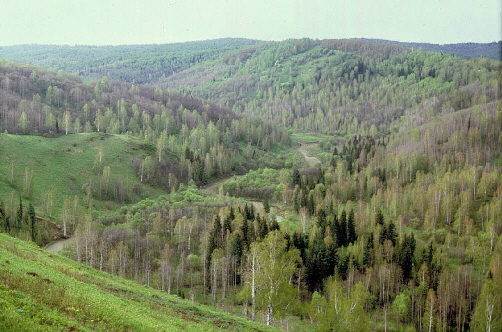
Softwood comes from Conifers (think Pines, Firs, Spruces, Christmas trees, trees that have seed cones and are almost all evergreen). Hardwood comes from Angiosperms (think trees that have flowers and lose their leaves like Basswood, Birch, Cherry, Elm, Oak, Maple & Willow).
Just to add to the confusion, there are hardwoods that are mechanically soft like Balsa Wood and softwoods that are mechanically very hard like Douglas Fir. Basswood happens to be one of the mechanically softer hardwoods.
Wood, just like steaks for example, is graded before it’s sold Hardwood and Softwood are graded differently. Softwood is graded either for strength or for appearance (trust me it’s a lot more complex than that). Unlike Softwood grading, Hardwood grading has nothing to do with the strength of the wood. Hardwood is graded by the percentage of the piece of wood that is free of defects. This is basically done to determine the amount and size of defect free pieces. The higher the grade, the more of a given piece of wood is usable.
OK, if you have made it this far you now know more than 90% of everyone else in the business about woods and Basswood in particular.
Sunland® Shutters, through our subsidiaries and sister companies owns large commercial Basswood Hardwood forests in Northern China and Southern Russia (teshautSiberia).
We are the only company we know of who controls the entire process for Basswood shutter production. We cut the trees. We mill them in our own wood mill. We do the kiln drying. We do the component milling and molding. We make the shutter and we paint it. Since we are a vertically integrated wood milling / shutter production company we have control of the entire process from timber cutting to final packaging. This gives us complete control over the consistency and quality of our materials and production.
Because we cut the timber and run the wood mill, we can use every part of the tree in our production process.
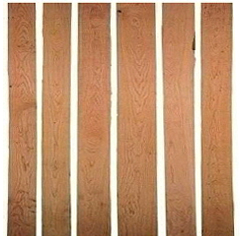
Select & Better
We divide the timber into 3 grades. Grade A is used for our Lexwood® Premium Stained shutters. This would be about what we call FAS, FAS 1-Face (F1F), Select and 1-Face grades in the US. Long pieces of wood with few defects to cut out that allow for long lengths of wood. You really need this type of wood to make a stained shutter.
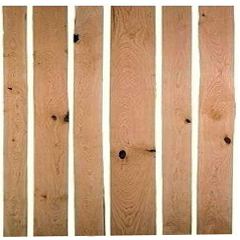
#1 Common
Second Grade is used in the Lexwood® Advantage Painted shutters. This would be about what we call No. 1 Common grade in the US. This is shorter lengths of wood with a few more defects to cut out. This wood is then finger joined to make the longer pieces needed for shutter production.
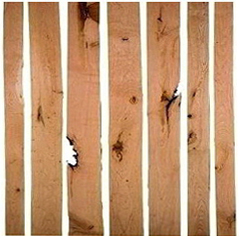
#2 Common
Third Grade is used in the Lexwood® Plus Painted shutters. This would be about what we call No. 2 Common grade in the US. This is still shorter lengths of wood with more defects to cut out. This wood is then finger joined to make the longer pieces needed for shutter production.
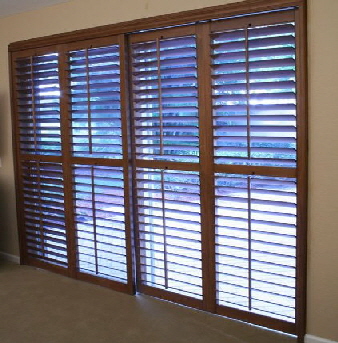
Our Lexwood® Premium, Advantage and Plus shutters have received the GREENGUARD® Certification Program and the coveted GREENGUARD® Gold Certification. This means that our shutters have passed an extensive series of tests to ensure that they meet stringent third-party standards for low chemical emissions based on established health standards. Our Certificate numbers are 7358-410 and 7358-420. All GREENGUARD® Certification Program products have been tested for their chemical emissions performance and can be found in the GREENGUARD Online Product Guide.
All GREENGUARD® Gold Certified products have been tested for their chemical emissions performance according to CA 01350 and can be found in the GREENGUARD® Online Product Guide. At Sunland® Shutters we take full advantage of our position as a fully vertically integrated manufacturer. Since we control all steps of the manufacturing process we can emphasize the quality and consistency of our shutters. We know of no one else who is a fully vertically integrated company.
GREENGUARD®
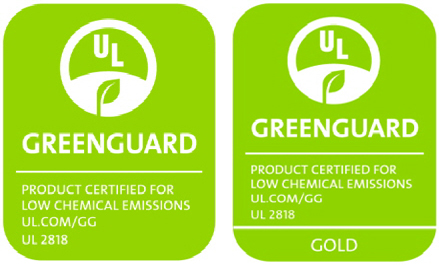
A quick word about finger jointed wood. Some people are going to try to tell you that jointed wood is no good or not strong enough to use. While that may have been true 20 or 30 years ago, it is simply not true today. Finger jointed wood is fully accepted in the industry. Per the National Design Specification. 1997. Para. 4.1.6 American Forrest and Paper Association. “Structural end jointed or edge-glued lumber shall be permitted to be used interchangeably with sawn lumber members of the same length”. Finger jointed wood is fully accepted by the Southern Building Code Congress, the International Building Officials and Code Administrators, the International Conference of Building Officials and the Council of American Building Officials.
One of the benefits to using finger jointed wood is that it allows us to use much more of the tree. Since finger jointed wood is made from smaller lengths of wood we can use much more of the tree to make shutters. This means that we have to cut down fewer trees and that we have much less wasted lumber. The ONLY disadvantage to finger jointed wood is that you can see the joint so you can’t use it for a stained shutter.

